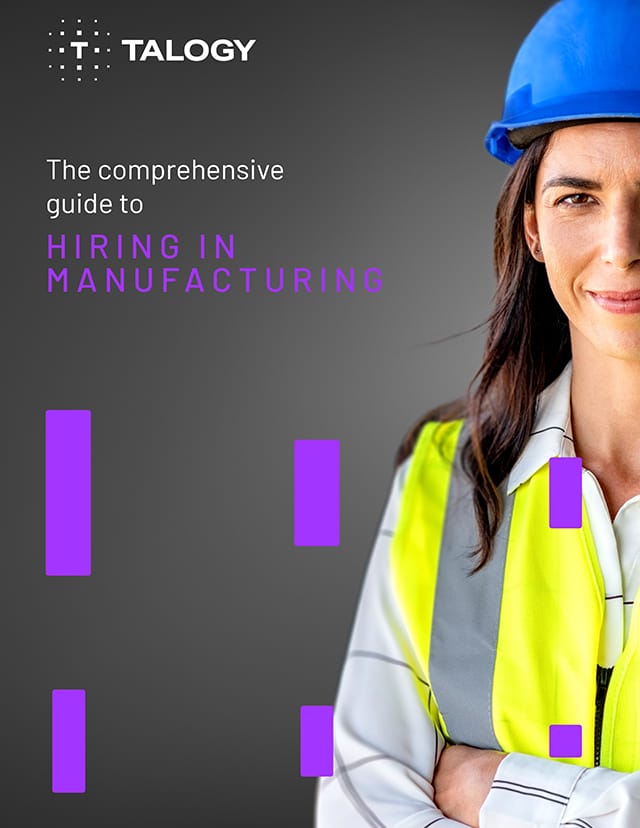By Esteban Tristan, Director, Talent Enablement & Learning
“Safety is our top priority.” Sound familiar? And while I feel that most companies genuinely mean that, sometimes holding employees accountable for safe work practices is easier said than done. For instance, consider these examples below:
“Employees are not supposed to be on their mobile phones when they’re out on the floor…but they do it anyway. We constantly see them pulling their phone out.”
“It depends on the supervisor – some of them enforce the safety policy, but some of them don’t. It depends on who’s in charge on that shift.”
“Drivers not maintaining a safe distance… pedestrians just walking wherever they want… We’re at a dead end with our PIV [powered industrial vehicles] safety – what else can we do??”
These examples highlight three different global organisations in three entirely different industries who are all experiencing the same challenge: first-line leaders struggling to hold their employees accountable for safety. So, what steps can organisations take to overcome this issue and strengthen their commitment to safety?
The difficulty of enforcing safety accountability practices
Accountability in terms of workplace safety has been a recurring theme for many of the organisations we work with here at Talogy. During calls with EHS experts or workshops with leaders, it appears to be the most common safety struggle. As one of our contacts stated, “It seems to be a lack of managerial courage.” But why is safety leadership – particularly enforcing safety policies – so challenging and ensuring safe behaviours so hard to enforce?
Many variables lead to the creation of this dynamic, including systemic, technical, and human factors. It’s not as easy as just telling an employee to wear their safety glasses or put away their phone – there is much more to it than that.
Sometimes, the conditions of the workspace itself (e.g., layout, ergonomics, temperature, etc.) make it difficult for employees to follow certain safety rules. In these cases, employees are placed in an impossible situation where they must choose between safety and doing their job. In other spaces, it can be tough to enforce safety accountability practices out on the floor because senior leaders and executives are not held to the same standards. Regardless of the situation, employees not following safety policies and leaders being unable to enforce these rules can lead to dangerous and even deadly consequences.
Lack of training can lead to poor safety practices
The reality is that first-time managers often lack the skills needed for proper safety accountability. This is more and more common as companies are forced to promote younger and less experienced hourly employees into leadership roles too quickly due to external factors such as growing retirement waves and a competitive labour market.
Hourly employees who excelled as operators or technicians might know the job and the equipment from a technical standpoint, but it does not mean they are ready to lead and manage teams. In fact, one of the most common themes we find in consulting with companies across industrial sectors is that first-line leaders are ill-equipped to become first-time managers. Rather than lead, they tend to approach their new position the way they always did – as an operator or technician. Without the training and development needed to excel in their first leadership role, they eventually struggle and become a bottleneck to the implementation of effective safety initiatives.
This is why it is critical to have a process in place to identify high potential hourly employees with the intent to promote these individuals into leadership roles. It’s also important to have structured programmes to develop their leadership skills, particularly in safety critical environments.
5 reasons leaders fail at safety accountability
Given that so many supervisors struggle to hold their team members accountable for safe behaviour, it is important to look at this as a specific safety leadership skill that can be developed. Here are some of the most common reasons and behavioural gaps we see in first-line leaders in industries such as manufacturing, energy, construction, and utilities.
1. Setting unclear or vague expectations
One of the most common themes I hear from supervisors is the realisation that they are not clear or specific enough in their safety expectations to employees. Saying “Be careful” or “Let’s be safe out there today!” does not constitute clear guidance on how to perform a task safely. Team members need to know from the beginning what work they are expected to perform, what that work looks like, and details on how to perform it safely. Without this, team members are left to interpret these things on their own, which sets them up immediately for unsafe work practices.
2. Not communicating the ‘why’ behind safety rules
Too often, employees are told to follow a safety policy without a proper understanding of why these rules exist. Supervisors may say, “Because it’s our policy” or “I don’t make the rules,” which further demotivates the employee to adhere to guidelines. In many cases, employees simply do not know the potential risks involved or what the machinery or equipment can do to them under certain conditions. Taking the time to explain how a process works as well as the associated hazards is essential for leaders to instill safety commitment in their employees – particularly when they have little or no industrial work experience, an increasing trend in today’s workforce.
3. Lack of self-awareness
Holding team members accountable for safe and successful job performance can be hard. It is especially challenging when you have low empathy, poor credibility, or engage in behaviours that alienate others, yet you have no clue that people see you in this way.
Low emotional intelligence can often result in this type of dynamic. Team members and colleagues are unlikely to give the leader feedback on these behaviours, and thus, the leader persists with certain ineffective behaviours which makes it hard for them to enforce safety policies.
4. Insufficient or ineffective feedback on safety behaviours
After training and coaching thousands of first-line leaders and middle managers on safety leadership practices, I can confidently say that the most frequent skills gap in safety accountability practices relates to feedback skills. Feedback is of paramount importance in cultivating a strong safety culture. But too often, supervisors miss golden opportunities to shape safety behaviours because they provide:
- Little to no feedback – Employees don’t really know if they did the work safely or not.
- Only negative feedback – Employees do nearly everything correctly but only receive feedback when they make a mistake.
- Feedback that is too general – Employees do not know exactly what they did safely or unsafely. One great example is the common, well intentioned, “Good job” which provides a feel-good moment for the employee, but does not really tell them what they did correctly or safely.
5. Conflict avoidance
One of the things that makes safety accountability challenging for leaders is that it involves having to have some tough, uncomfortable discussions. Providing corrective feedback or applying discipline for willful safety violations can create tension and interpersonal discomfort for anyone. This can be especially difficult for newly promoted leaders who are now supervising their former peers. However, when we are talking about safety, it is simply unacceptable for a supervisor to be unwilling to confront an employee to address unsafe behaviour or safety violations.
How certain leadership traits weaken safety accountability
Thankfully, first-time leaders can learn and develop the necessary skills to appropriately enforce safety accountability over time. However, certain personality traits and abilities can greatly influence this process. Some will possess traits that can make it much easier to develop these skills, whereas others have characteristics that will make this more difficult.
For example, front-line leaders who are very high on agreeableness or have a strong relational leadership style often find it more difficult to confront an employee about their unsafe behaviour. These individuals tend to be kind, friendly, and value harmonious relationships with others. While this can make a supervisor very approachable (a desirable quality in a safety leader), this style can also result in employees taking advantage of them and disregarding safety policies. If they do not receive the necessary corrective feedback or because they know that negative consequences are unlikely, that approachable nature can only go so far.
Similarly, a new leader may try to reinforce the importance of safety policies with their team, but if they tend to be low on the rule orientation trait themselves, this may prove difficult. Everyone differs in terms of how they perceive and interpret rules. Rule-oriented individuals tend to prefer strict, clear rules and procedures both in and outside of work. Rule flexible individuals, on the other hand, see rules more as general guidelines and are more comfortable with ambiguity or ‘grey areas’ when it comes to safety policies. As such, rule flexible leaders are more likely to make exceptions or send mixed signals to team members about compliance with an organisation’s safety policy. This makes it difficult for the leader to set clear safety expectations and over time, it will erode their credibility in the eyes of team members.
Utilise safety training to improve safety accountability
Without the skills discussed previously, it will be quite difficult for leaders to hold employees accountable for safety. This is further exacerbated when the leader’s personality profile is not naturally aligned with these behaviours. For this reason, it is important to understand new leaders’ potential early on in order to identify strengths and development areas when it comes to safety leadership skills.
Safety-based training and development efforts can even have a positive impact on the bottom line. In a recent study published in the Journal of Applied Psychology, the authors examined the effects of various types of safety training on nearly 40,000 individuals across over 150 different studies. They found that as a whole, safety training had numerous positive effects on employee learning, skills transfer, and safety outcomes.
Interestingly, non-technical safety training that developed ‘soft skills’ such as leadership, teamwork, and communication was significantly related to better learning transfer as well as fewer workplace injuries and safety violations. Since the skills needed to hold employees accountable – such as setting expectations and providing effective feedback – can be categorised as non-technical, we can surmise that training on these skills could also have a similar positive impact if delivered in a high quality and engaging manner. When coupled with validated psychometric assessments that measure relevant traits and styles, this type of non-technical training can have an even stronger positive effect, especially when leaders are given personalised feedback on how to create targeted action plans.
Accountability in action: Empowering leaders for safer workplaces
It is no secret that in order to create a truly safe work environment, organisations need to have proper safety accountability practices in place. By identifying the counterproductive behaviours of leaders and implementing relevant training and assessment practices, you can address any of the gaps that exist in your organisation.
The most important takeaway is to enable all leaders – especially those who are new to their role – to quickly develop the necessary skills to hold employees accountable for safety. It provides them with a behavioural roadmap they can use to navigate the tricky terrain that comes with enforcing safe work practices in high hazard work environments. This approach could truly make a difference and may be what saves an employee from experiencing a serious injury.
About the author: Esteban Tristan is an Industrial/Organisational Psychologist with nearly 20 years of experience consulting with global organisations across various industries. He has designed and implemented solutions for employee selection, leader development, coaching, and organisational safety culture.



